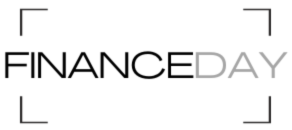How are digital ID solutions helping your fintech clients meet KYC requirements more efficiently?
In a mobile first era financial institutions on the one hand need to meet very strict regulations around privacy and the prevention of money laundering while on the other hand meeting customer expectation who want to be able to open a bank account anytime, anywhere and from any device. Thankfully this is a challenge for which AI first technology presents the perfect solution, delivering exceptionally high quality, with the best UX at a fraction of the cost of manual solutions. Fourthline started investing heavily in AI eight years ago and as such we have a long track record of data proving the power of deploying AI at scale.
What integration challenges exist between legacy banking systems and modern digital ID platforms?
Legacy banking systems have a lot of data, but data tends to be siloed with data stored in different systems owned by different teams. This results in a lack of full oversight which results in both missed risk signals and duplicate information requests to clients leading to a lot of friction and frustration. Modern ID platforms on the other hand can unleash the power of data by creating a single source of truth that can be reused in different internal processes, leading to better outcomes and less friction. Fourthline’s unified data model is a prime example in which re-using existing data points has led to a 0 false positive promise in AML Screening and Monitoring.
How do you balance robust authentication with frictionless customer onboarding in financial services?
Technology allows for a risk-based approach in which an institution can tailor flows depending on the type of client, local regulatory requirements and the risk of the products offered. A modern digital ID platform, like Fourthline, will allow financial institutions to define specific metrics (including FAR and FRR) to ensure the right balance is struck between robust authentication with frictionless customer onboarding.
What role do open banking standards play in your digital ID strategy?
Open banking allows for adding additional data points to complement KYC requirements in specific markets. Examples include the German market in which open banking can be leveraged to perform bank account verification by asking the client to transfer EUR 0.10 from an existing bank account in their name. Fourthline has seen strong demand for this solution as financial institutions increasingly are looking to move away from alternatives like Video-KYC.
How are you addressing cross-border verification challenges for international financial transactions?
Financial criminals do not stop at the border and neither should we. While Fourthline cannot share individual client data from one bank to another, we can monitor (fraud) trends on a cross border, cross partner level through time. This ensures that you identify a new modus operandi faster than anyone else, allowing us to stay one step ahead of the fraudsters. Additionally, it is important to have a digital ID partner that understands the nuances of local markets, both in terms of local regulatory requirements as well as in local client preferences.
What emerging fraud threats are shaping your digital ID roadmap for fintech partnerships?
The fundamental shift is the move from viewing KYC as a one-off event or a snapshot to viewing KYC as a continuous process or a movie. Clients increasingly realize that technology allows them to protect their identity, their bank account and their savings and as such expect their bank to offer selective security layers including Biometric Authentication. As such KYC will no longer be seen as a top-down imposed process but as a bottom-up demand from the market to fight financial crime in a partnership between an individual, their bank and their digital ID provider.

